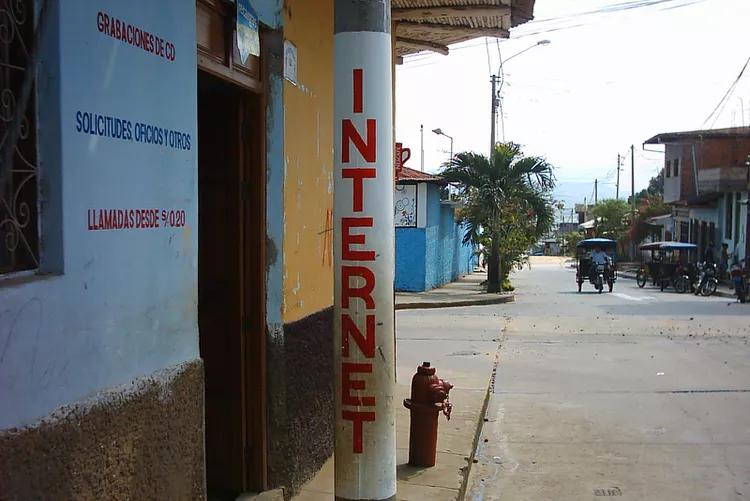Summary
Internet access in Peru is good but not flawless. Connection speeds range from insufferably slow to impressively fast, largely depending on your location. In general, you won’t have any problems with day-to-day tasks such as emailing and surfing the web, but don’t always expect stutter-free streaming or rapid downloads.
Public Internet Booths
There are internet booths (cabinas públicas) almost everywhere in Peru, even in many small rural villages. In towns and cities, you rarely have to walk more than two or three blocks before you see a sign saying “Internet.”
Simply walk in, ask for a computer, and get started. Expect to pay about US$1.00 per hour (more in touristy areas); the prices are either set in advance or you’ll see a little running meter on your screen. Internet booths are often short on change, so try to have a few nuevo sol coins in your pocket.
Internet booths provide a cost-effective way to keep in touch with people back home. Most public computers have Windows Live Messenger already installed, whereas Skype tends to be rare outside the big cities. Problems with microphones, headphones, and webcams are common; therefore, if something isn’t working, ask for new equipment or switch computers. For scanning and printing, look for a modern-looking internet cabin.
Quick tip: Latin American keyboards have a slightly different layout compared to English-language keyboards. The most common quandary is how to type ‘@’ — the standard Shift+@ doesn’t normally work. If it doesn’t, try Control+Alt+@ or hold down Alt and type 64.
Wi-Fi Internet Access
If you’re traveling in Peru with a laptop, you’ll find Wi-Fi connections in some internet cabins, trendy internet cafes, restaurants, bars, and in most hotels and hostels.
Three-star hotels and above often have Wi-Fi in every room. If not, there may be a Wi-Fi lounge area somewhere in the building. Hostels typically have at least one computer with internet access for guests.
Modern cafes are excellent options for Wi-Fi. Buy a coffee or a pisco sour and ask for the password. However, if you’re sitting near the street, keep half an eye on your surroundings, as opportunistic theft is common in Peru—especially snatch theft involving valuable items such as laptops.
USB Modems
Both Claro and Movistar cell phone networks offer internet access via small USB modems. Prices vary, but a standard package costs about S/.100 (US$37) per month. However, signing a contract can be complicated—or even impossible—if you are in Peru for only a short time on a tourist visa.
Mobile Phone Hotspot
The majority of mobile smartphones can act as a mobile hotspot—meaning, the phone will generate a Wi-Fi signal that you can connect to through your laptop to surf the web, access email, and even video chat.
The most critical requirement is ensuring you have an unlocked phone before departing for your trip. Contact your cell provider before leaving to confirm or request that your phone be unlocked.
Once in Peru, it is relatively simple to find stores that sell a SIM card with data. There is a Tourist SIM Card package for a few dollars that offers around 2 GB of data for 15 days. While this may not be ideal for streaming movies on your laptop, it should suffice for checking emails and other daily internet needs.





